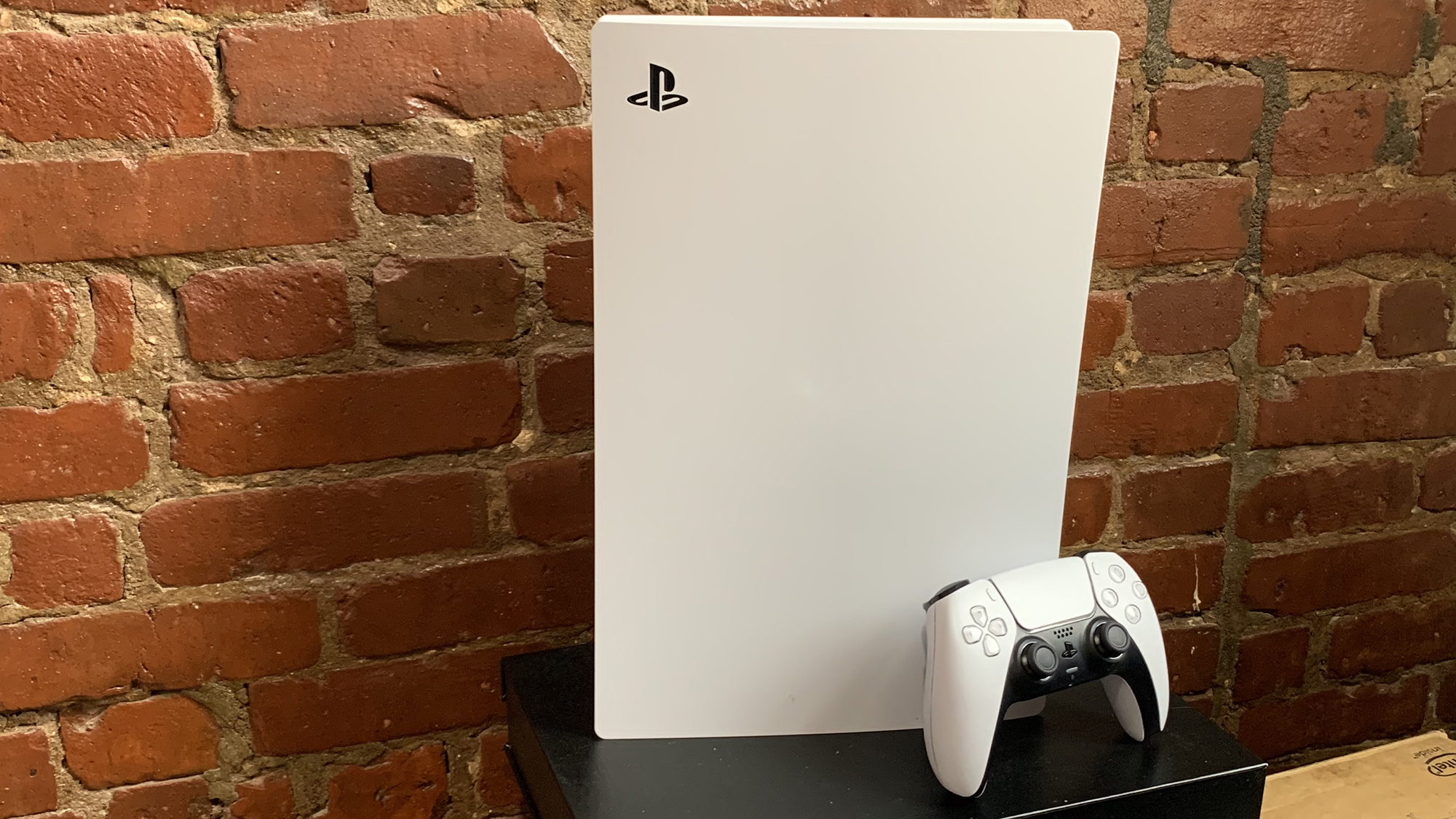Laptop Mag Verdict
Pros
- +
Incredibly powerful components
- +
Revolutionary controller haptics
- +
Evolved user interface with innovative features
- +
Stunning 4K graphics
- +
Great backwards compatibility
- +
Solid launch-day lineup
Cons
- -
Massive, polarizing design
Why you can trust Laptop Mag
Now, this is next-gen. Sporting a funky, futuristic, intergalacticexpialidocious look, the PS5 screams next-gen. And thankfully, the console has the technology and the games to back up its outlandish appearance. Sporting a custom AMD processor and graphics card, not to mention a custom SSD, the PS5 exudes power which is belied by its whisper-quiet fans.
In addition to the hardware, you have an evolved user interface that could potentially hold the future of gaming within its clean lines and neatly organized icons. Then you have the DualSense control, which is heads and shoulders above anything we’ve seen from a game controller in regards to haptics. Have you ever blown on a controller’s microphone port? You will now, and be better for the experience.
But it wouldn’t be an official console war without some kickass games. Sony’s firing on all cylinders coming with heavy-hitters like Spider-Man: Miles Morales, the deceptively cute Astro’s Playroom and the weirdly appealing Bugsnax. Yes, the PS5 is everything you’d expect from a next-generation console and then some.
- PS5 vs PS5 Digital Edition
- Xbox Series X vs PS5: Which console is right for you?
- PS5 DualSense vs Xbox Series X controller
PS5 pricing and configurations
Price: $499 (standard), $399 (Digital Edition)
CPU: 3.5-GHz, 8-core AMD Zen 2 processor
GPU: 10.3-teraflop RDNA 2 GPU
RAM: 16GB GDDR6
Storage: Custom 825GB SSD
Expansion: NVMe M.2 SSD slot
Disc drive: 4K Blu-ray player
Size: 15.4 x 10.2 x 4.1 inches
Weight: 9.9 pounds
The PS5 comes in two flavors: digital and standard. The digital version lacks a physical disc drive and costs $399 while the standard edition I’m reviewing is priced at $499. Both systems ship with a DualShock 5 controller, HDMI and power cords, and a stand to allow the system to stand vertically.
PS5 design
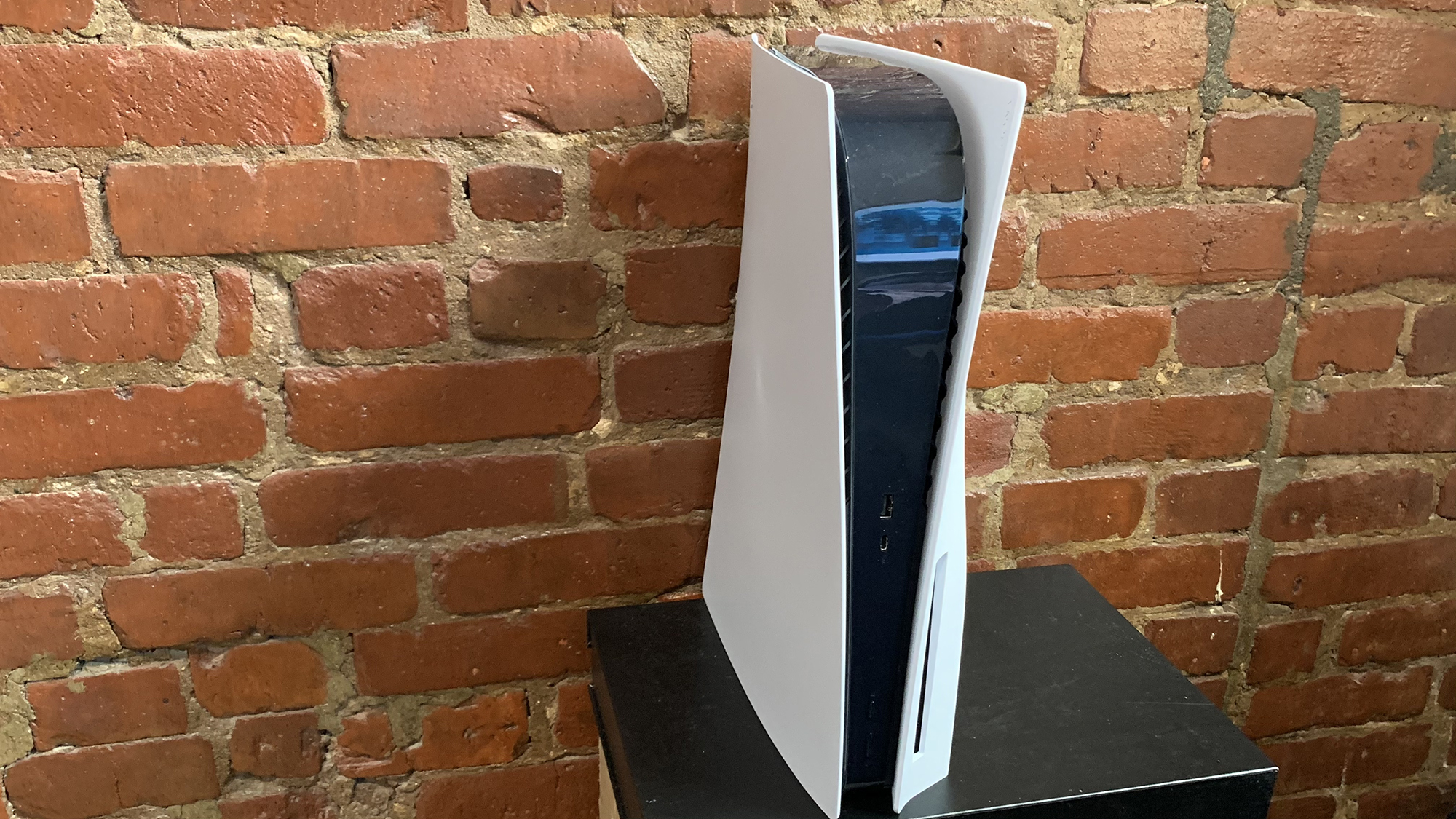
By now, you must have seen at least one of the many memes taking aim at the PS5’s rather out-there design. My personal favorites are the ones that make it look like Seto Kaiba from Yu-Gi-Oh!, but that’s just me. Funny memes or no, one thing’s for sure, the PS5 doesn’t look like any console we’ve seen before, and that’s a good thing.
I don’t know, maybe it’s all those years of reviewing Alienware systems, but I’m a fan of the avant-garde, take-me-to-your-leader look of the PS5. It looks like a scale model of a fancy building that I could never afford to live in. When I see the PS5 standing tall with its undulating white matte plastic plates sandwiching the glossy black plastic core, I imagine I’m living in a penthouse apartment looking down at a world full of promise.
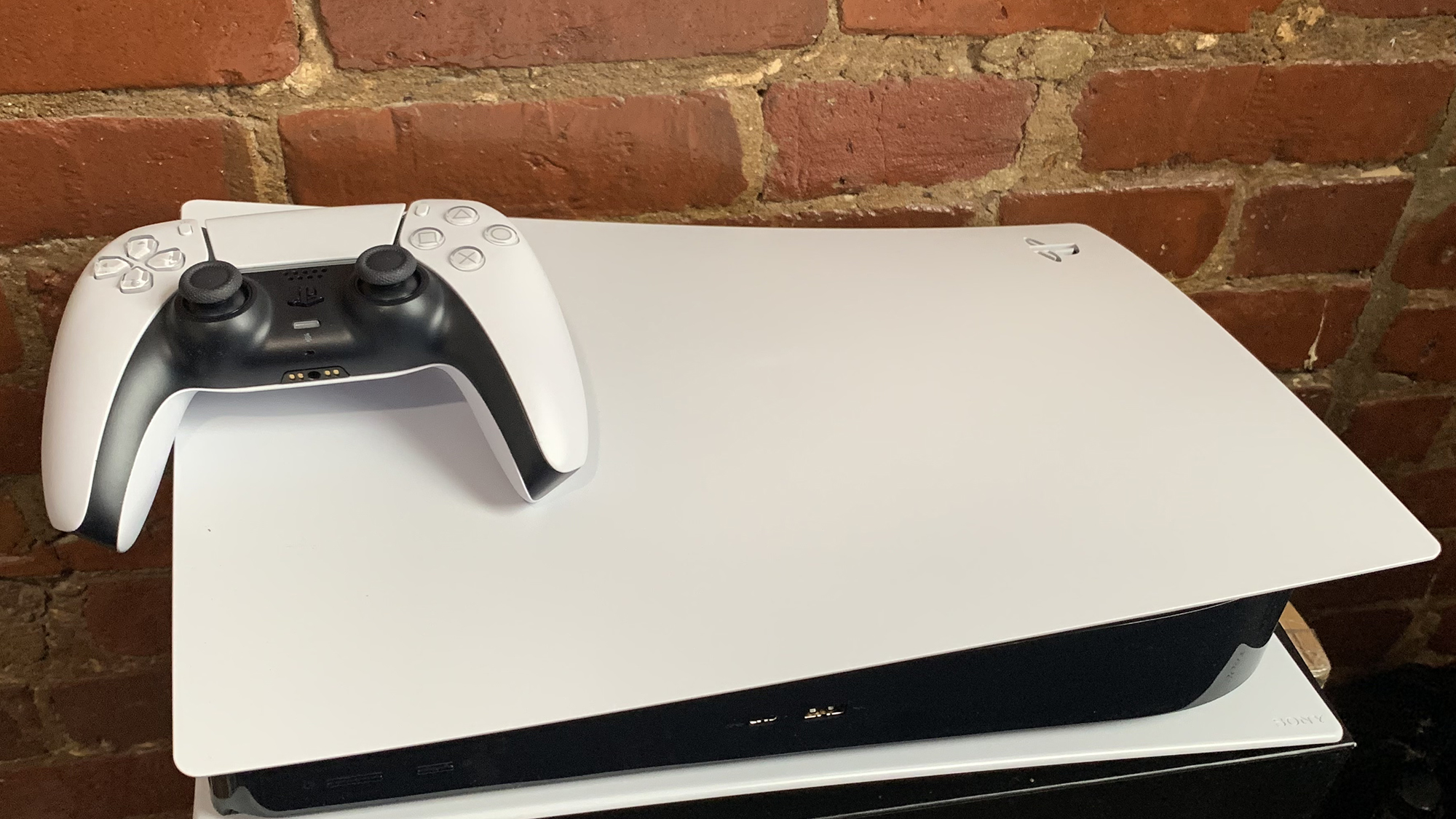
There is a status light that runs down the sides of the core, switching from blue when it’s powered on, white when running and orange in rest mode. Thanks to the physical disc drive, the left side of the console has a slight protrusion, but it doesn’t mar the overall look of the device.
As the numerous pictures and videos revealed, the PS5 is massive at 9.9 pounds, 15.4 x 10.2 x 4.1 inches. It makes the PlayStation 4 (6.1 pounds, 10.8 x 12 x 2.1 inches) and PS4 Pro (7 pounds, 15.6 x 11.6 x 2.6 inches) look small in comparison. The PS5 is even larger than the Xbox Series X, which weighs 9.8 pounds and measures 12 x 6 x 6 inches.
PS5 ports and expansion
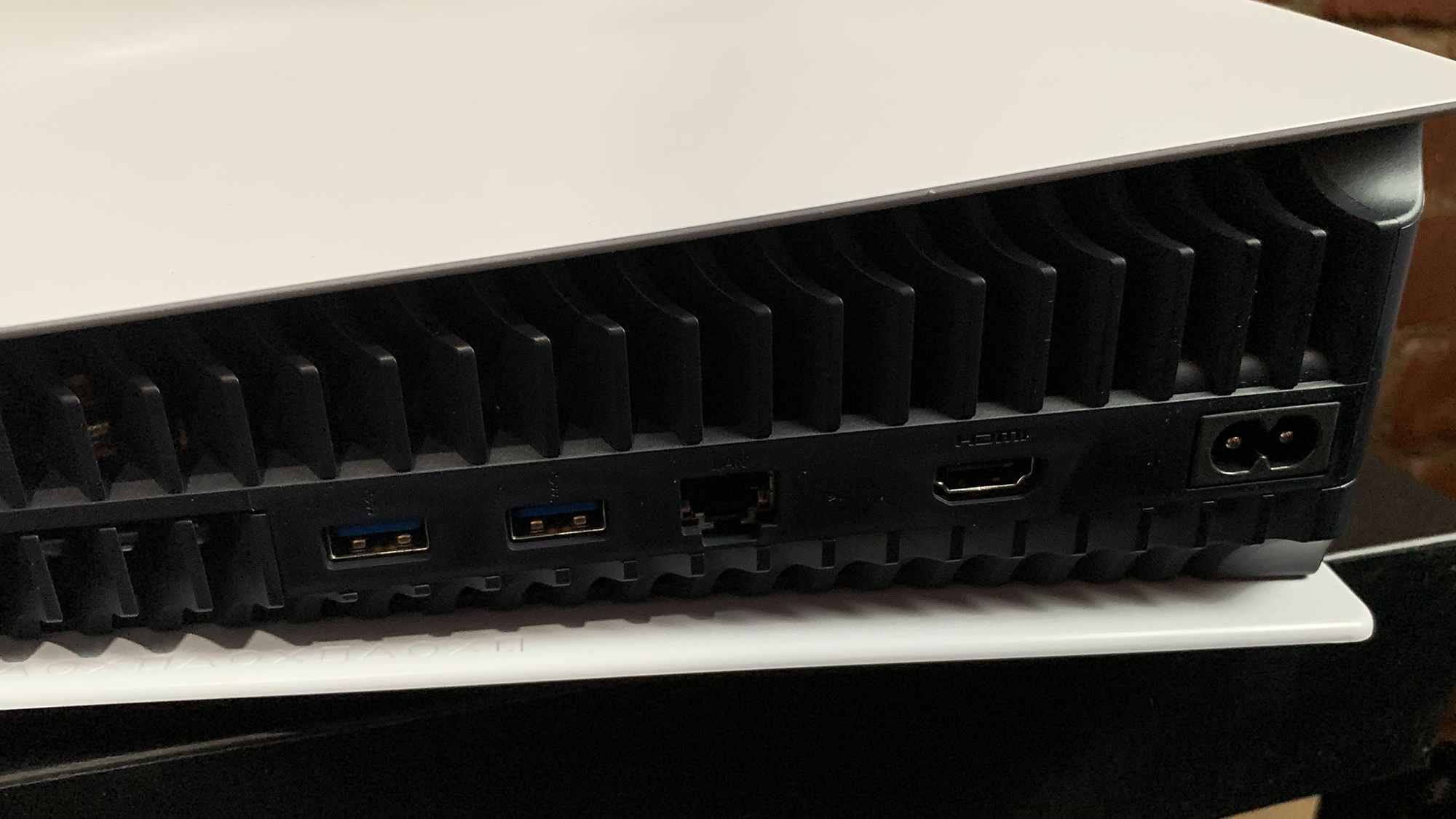
If the console’s trippy design didn’t clue you in that we’re living in the future, then maybe its ports will. If the PS5 is positioned vertically, you’ll find a USB Type-A port accompanied by a USB Type-C input along the center front of the glossy core. Toward the bottom are buttons for power and disc eject, and speaking of disc eject, there is a Blu-Ray drive directly to the left.
In the back, you have a security lock slot at the top of the system with a pair of USB Type-A ports, a Gigabit Ethernet port, HDMI and a power jack. Noticeably missing is the optical port, which some gamers use to connect a soundbar or a pair of surround-sound headphones.
One of the first things I do with a new console is expand the storage. It’s especially important this time around since the PS5 falls short of the 1TB mark with only an 825GB SSD. But like the previous generation of PlayStations, it will involve a little handy work as you’ll have to remove the plates to access the PCIe 4.0 M.2 expansion slot inside the console.
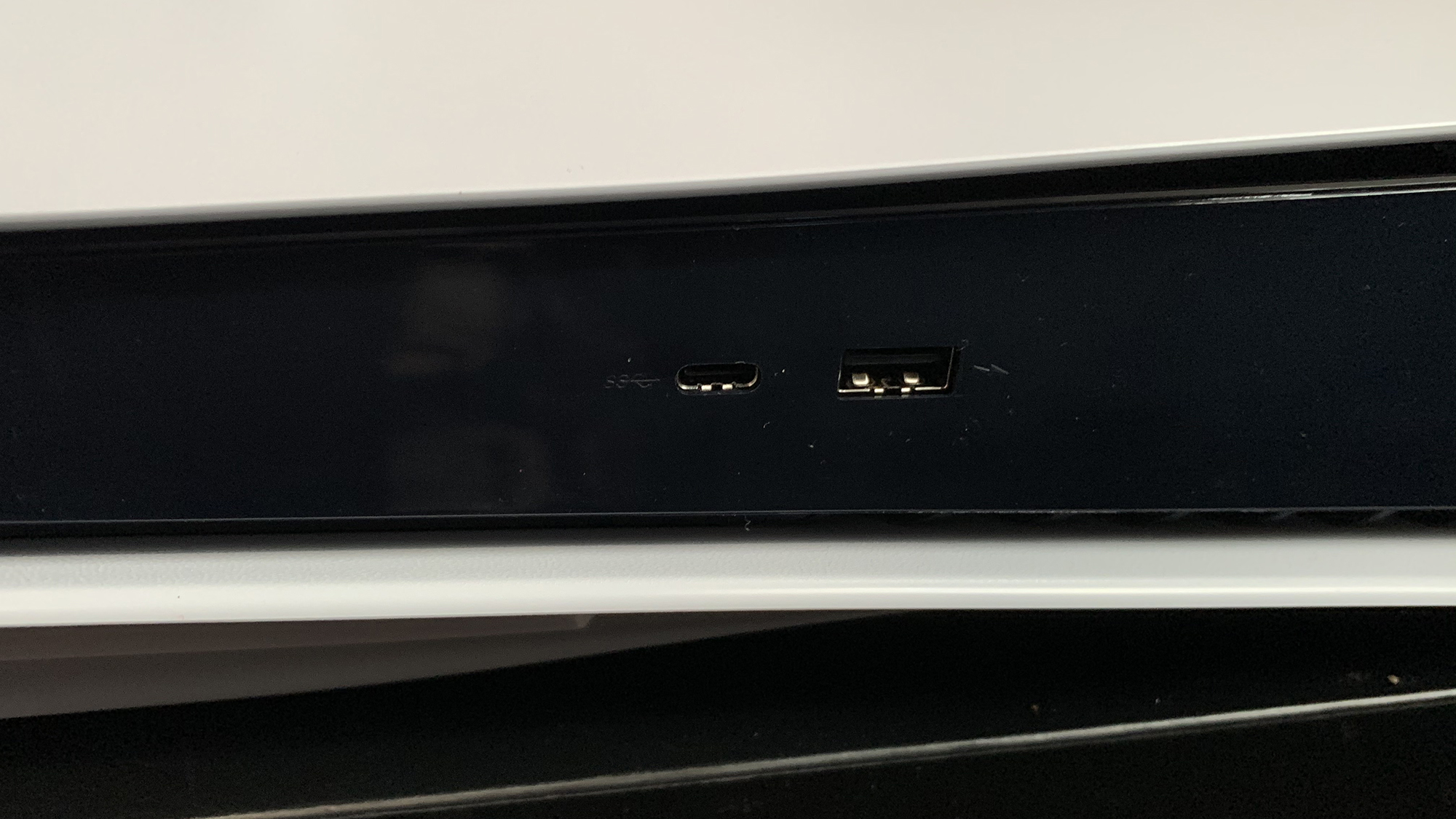
Just keep in mind that you’ll have to stick with SSDs that are PS5-certified and meet Sony’s bandwidth requirements. To date, Western Digital is the only company that hits the mark with its SN850 NVMe SSDs. They’re available in three varieties 500GB ($149), 1TB ($229) and 2TB ($449). It’s more than likely that Seagate and other hard drive companies will announce their own solutions sooner than later. It’d be nice if you could just slide the module into a small, easy-to-access slot like you can on the Xbox Series X, but beggars can’t be choosers.
And after waiting for two generations for PlayStation to play nice with external drives, the idea has been tossed out the window. Yes, you can still use one, but only to transfer your digital PS4 games and save files.
PS5 specs
It just wouldn’t be a good console war if there weren’t souped-up specs to consider. Both the standard and digital edition of the PS5 have an 8-core, 3.5-GHz AMD Zen 2-based CPU with 16GB of GDDR6 RAM, a 10.3 teraflop AMD RDNA 2 GPU with 36 Compute Units (CU) and a custom 825GB SSD.
The Xbox Series X has nearly identical components except its processor has a higher clock speed at 3.8-GHz. Also, its AMD RDNA 2 GPU is serving up 12 teraflops and 52 CU. Plus, you get a 1TB custom NVMe SSD for storage.
At a glance, it seems the Series X has a slight power advantage, but these things all tend to come out with the wash.
PS5 4K, 8K and HDR
One of the best things about all the power AMD is bringing to the PS5 is the console’s ability to play games at 4K at 120 frames per second. Although the higher frame rate essentially means a smoother playthrough at 60 fps, doubling the fps also translates to less lag, better graphical detail and an overall better gaming experience. The console can also run 8K video when such content becomes available.
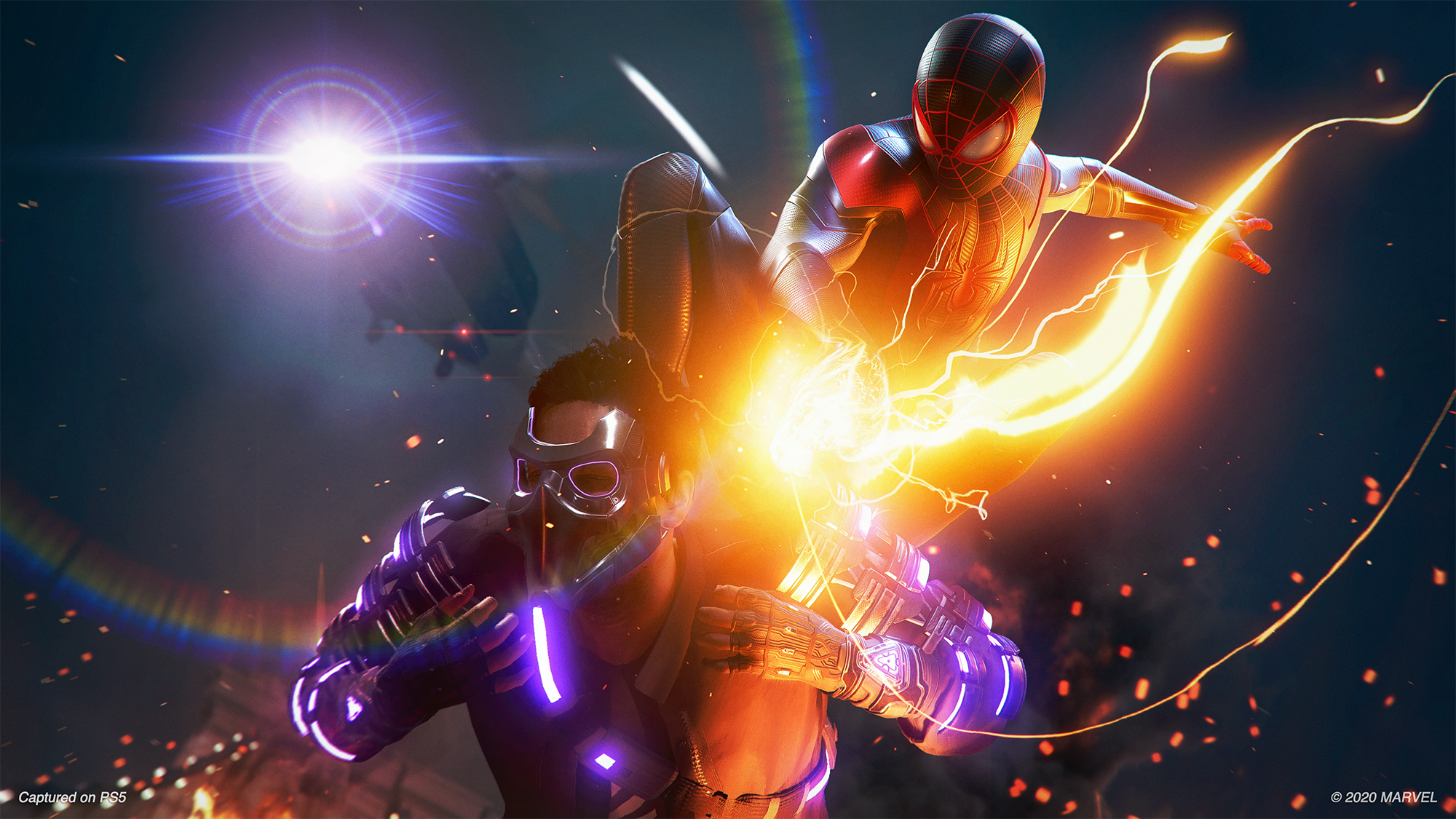
Other graphical improvements include ray tracing, a feature that has only just come to high-end PCs. It’s essentially a technology that renders more realistic lighting and shadowing. The CPU and GPU work in tandem to process and render the scene, simulating and tracking every ray of light produced by a source of lighting. So if a ray of sunshine hits a shiny object, the system will calculate where the resulting reflecting beams will land and render it. It’s a technique filmmakers have been using for CGI for a while now so you can imagine the implication for games.
I’m not fortunate enough to own an 8K television (yet), but I can tell you that on my LG OLED55E8PUA TV, everything I played looked absolutely gorgeous. When I ran up a glass skyscraper in Spider-Man: Miles Morales, not only could I see every building perfectly reflected, but if I stopped, I could see the intricate stitching in Miles’ black-and-red spidey suit.
PS5 DualSense controller
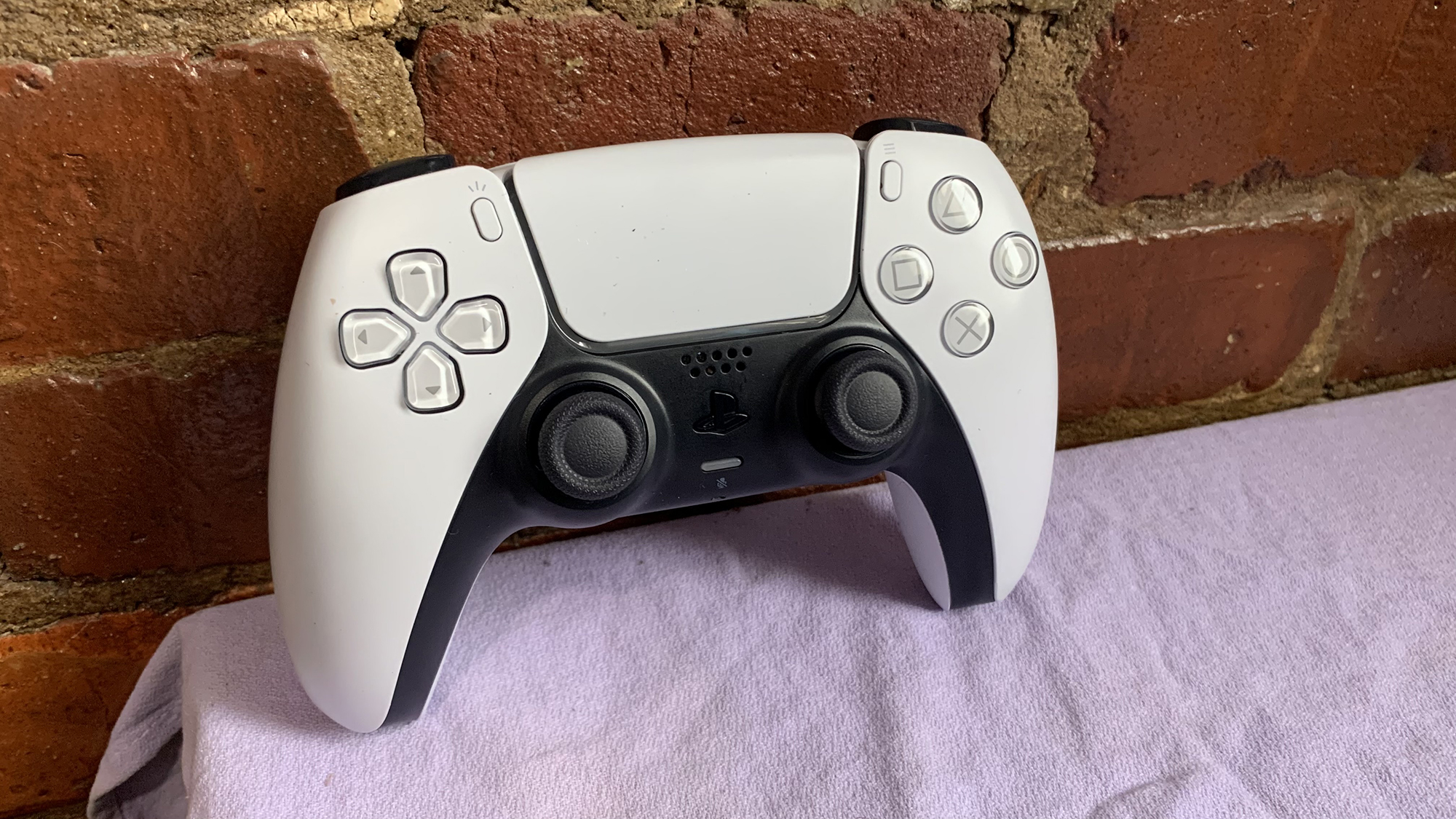
Controlled, targeted vibrations throughout the entirety of the controller, including subtle rumbles on the touchpad? This ain’t your mama’s rumble pack for sure. The DualSense 5 controller is unlike any you or I have used. It’s got the sheer strength of the old-school Nintendo 64 rumble packs with the nuance of motion controls.
Hell, you can blow into the microphone port and get a response depending on the game. I highly recommend you play through Astro’s Playroom to really get a feel for this new controller.
In addition to the rumble, you should also pay attention to the adaptive triggers. Depending on what’s going on in-game, a bit more force can be required to get the trigger buttons to actuate. For instance, my little bot had to jump into a spring-loaded suit to navigate one of the levels in Astro’s Playroom. How hard I pressed the right trigger button determined how high/far my leap was going to be. And if I held the button down for a few seconds, I could feel the vibration building, simulating the energy being built up for the next move.
As the speaker on the controller suggests, the controller will have sound pumped in depending on the game. From what I can tell, the audio quality is a lot richer on the DualSense than on its predecessor. Seriously, it took me about an hour to realize that my BB’s cries during Death Stranding were coming from my controller as well as the television. There’s no such confusion on the DualShock 5 as I could clearly hear a ratcheting sound as I rotated a mounted controller in Astro’s Playroom.
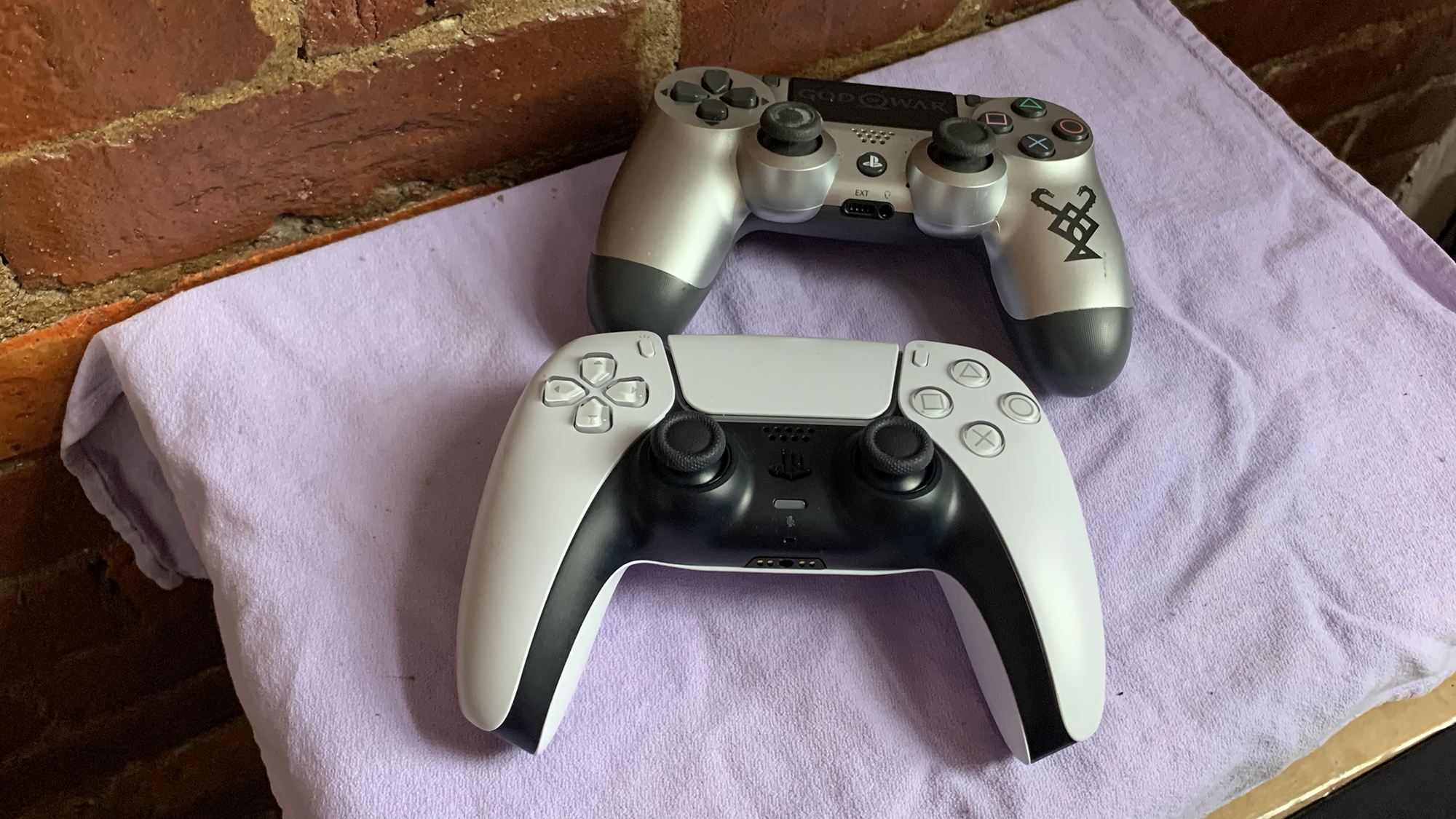
The DualSense controllers are seriously cool, so much so that I worry about developers not using them to their potential. While there were some DualSense mechanics in Spider-Man: Miles Morales, it was nowhere near as pronounced as Astro Playroom. I’m really hoping that this doesn’t get pushed to the wayside the way the rear-mounted touchpad on the PS Vita went largely unused in its too-short lifespan. In the right hands (no pun intended), the DualSense controllers can greatly enhance the gaming experience.
If reports from our sister site, GamesRadar, are true, Capcom has plans to incorporate at least some of the DualSense features into the upcoming Resident Evil 8, which is reassuring.
PS5 spatial audio
In addition to slick 4K (and 8K) capabilities, the PS5 also has spatial audio, which is a fancy way of saying 3D audio. Although I’m eagerly awaiting the new PlayStation Pulse 3D wireless headset to launch, the feature works with some wired headphones via the audio port on the controller. Sony has plans later down the line to expand the functionality to TV speakers and soundbars, but we’re not sure how far away that timeline is.
It’s not surprising that the PS5 is getting 360-degree audio as Sony’s been making a big push to bring the technology to many of its headphones and earbuds, including the WH-1000xM4 and the WF-1000xM3.
For the console, the company is using its proprietary Tempest 3D AudioTech engine. Where previous consoles created the illusion of 360 audio by bumping up the audio effect when you get closer, Tempest3D uses the GPU, timed effects, and Head-related Transfer Function, or HRTF for natural, dynamic soundscapes. HRTF deciphers how an individual's ear receives sound. It’s a cool trick, but everyone’s ear is shaped differently, so is the way everyone interprets sound. In some cases, people might not be able to detect spatial audio at all. Just in case, Sony has come up with five separate audio profiles. If it all goes well, Tempest will convince your brain into identifying the location of every sound.
It’s similar to what’s currently used in the PSVR, but instead of being limited to 50 sound sources, the PS5 increases that to hundreds of intricate noises. It also increases the overall audio quality. That means when you’re playing the Resident Evil 2 remake, you’ll hear every shuffling footstep and every blood-chilling moan from its exact source in the dark, which is usually right behind you.
PS5 user interface
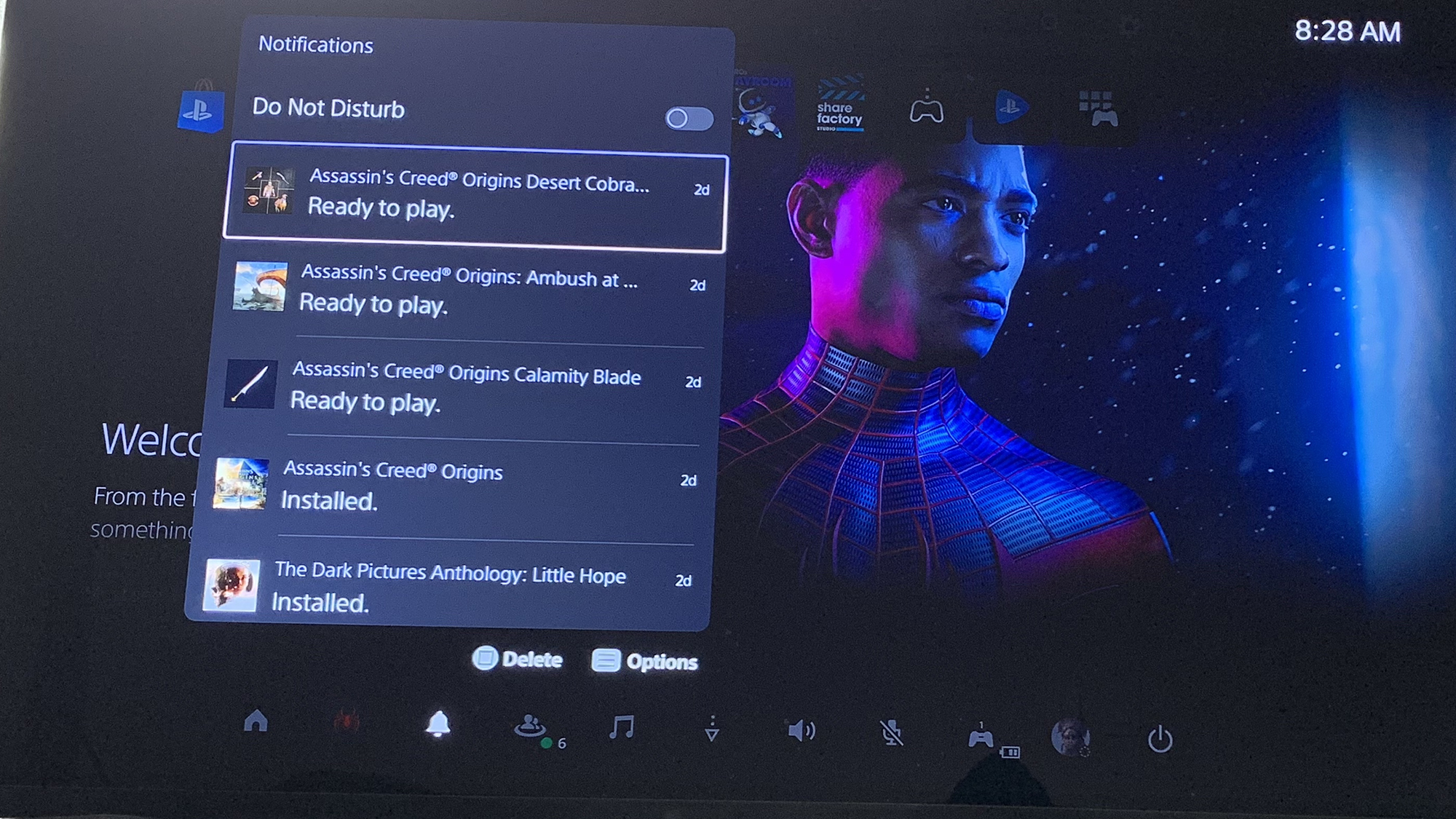
This is a UI worthy of a next-gen console. From launch, the screen erupts in golden sprinkles, giving way to a gray, sun-dappled backdrop with your account avatar waiting for you to select it and get to the main course. If you wait a few seconds, you’ll watch as the light hits your avatar, making it flash in expectation.
Once you hit X, you’re greeted with a user interface that’s simultaneously familiar and foreign. Similar to the PS4 setup, you’ll notice a top row of tiles. Although considering their overall size, I’m more apt to call these icons. Leading the charge is the instantly recognizable blue bag signifying the PlayStation Store. From there, you have icons for News, whatever games you’ve played or are in the process of downloading, followed by Share Factory Studio, Remote Play, PlayStation Now and Game Library.
At the very top, you have tabs for Games and Media. The former is where you access all your games while Media takes you to the console’s various apps. In the top right corner are icons for Search, Settings, your account, and the time. If you’re looking for the rest of the Control Center apps, you’ll have to hit the PS button on the controller. From there, a row of utilities appears along the bottom of the screen with white icons for Home, Switcher, Notifications, Game Base, Music, Downloads/Uploads, Sound, Mic, Accessories, your account and power. If you hit the Options button on the controller, you can customize the order of the line and even add a few more, including Broadcast, PSVR and accessibility.
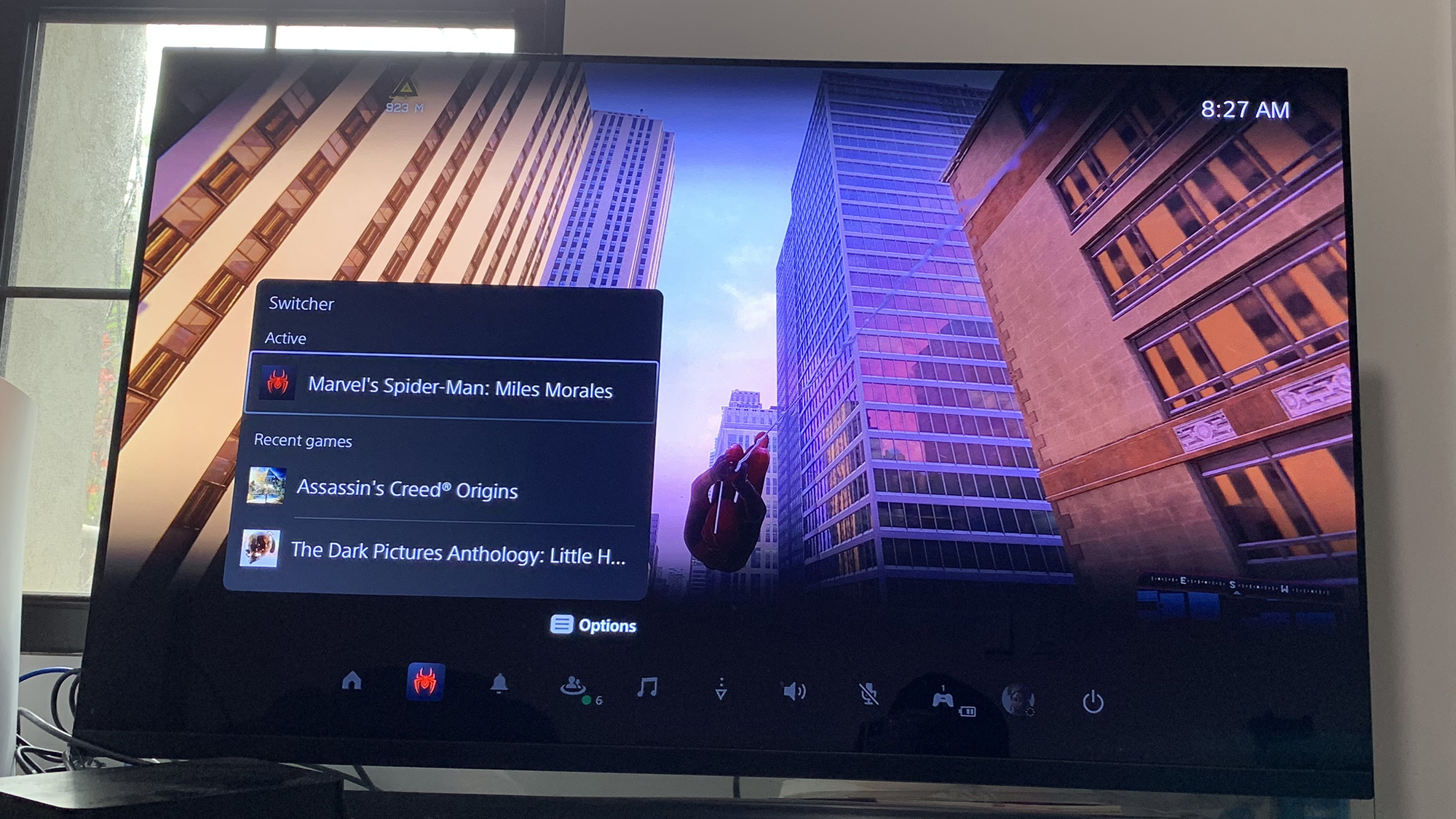
So let’s talk about the biggest changes. Notifications and Downloads/Uploads now exist as different icons. Party and Friends has been replaced by Game Base, streamlining your efforts to be a social gaming butterfly. The new Music button serves up curated Spotify lists (once Spotify becomes available). Clicking on your profile allows you to change your online status, access your profiles, check out your trophies, switch users and log out. Sound is where you choose your output device, adjust the volume of your controller speakers as well as voice chat, music and video.
But the biggest and best addition to the interface is the Switcher. Now, instead of having to force close games when you want to switch to another title, you can go to the Switcher and choose among your most recent titles. At first glance, this looks similar to the Series X’s Quick Resume feature, which suspends a game and places it in storage until you're ready to come back to it. But where Quick Resume puts you right back into the spot you stopped playing, the Switcher brings you back to the boot screen. It’s still a convenient way to jump between games, but Xbox does a much better job of it.
At press time, it seems the PS5 only allows you to switch between three titles, listing one as active and the remaining two as recent. If you boot up a fourth game, the title previously in the second recent games spot will be closed, so make sure you save your games before you go switching all willy-nilly. I’m hoping more will unlock during launch as the Series X and S can hold between 4 and 6 games depending on how large and complex they are.
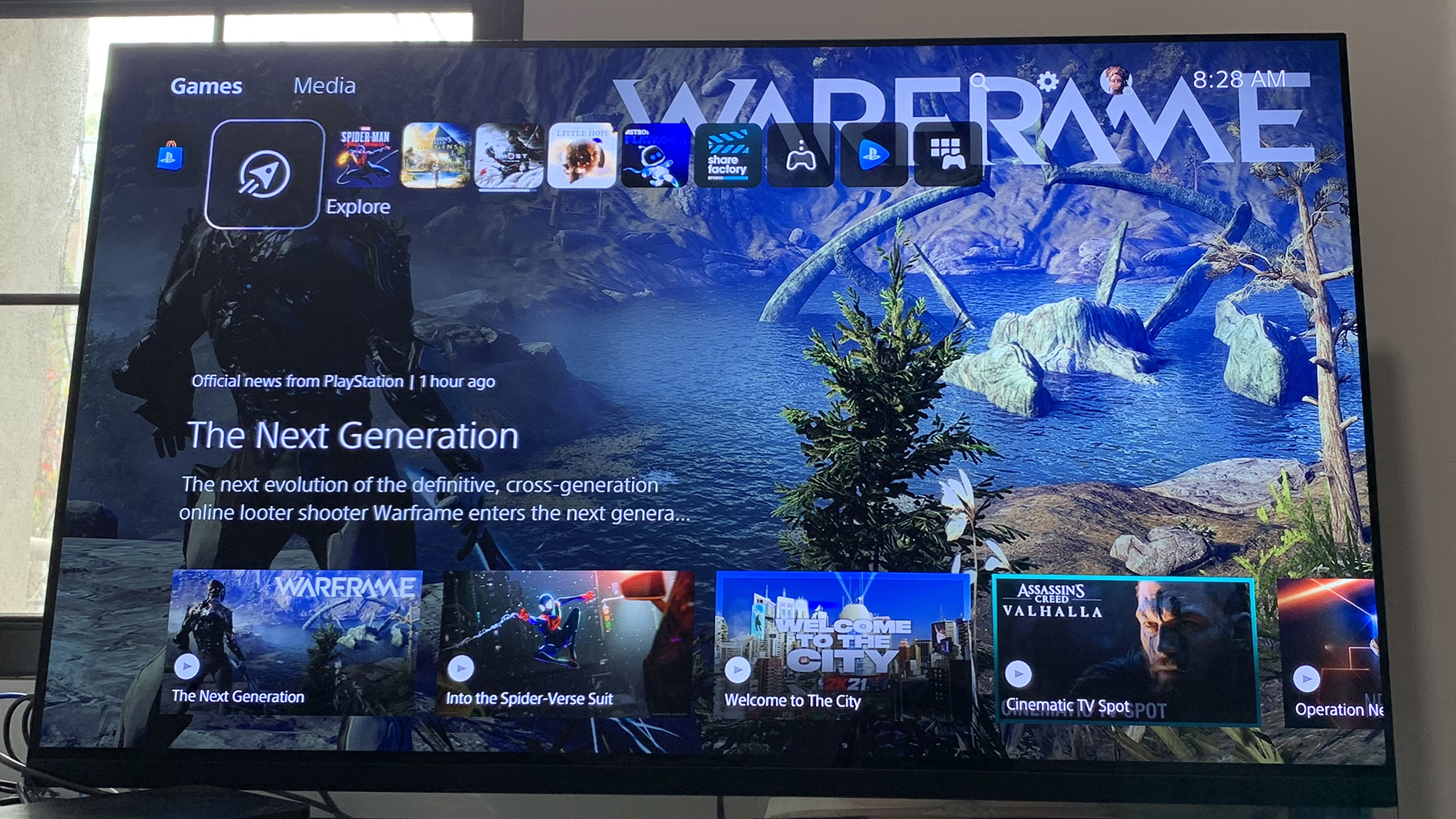
I like that if you cursor over a game on the home screen, the background changes to a flashy title screen accompanied by the game’s theme music. However, I’m hoping we’ll have the ability to set custom wallpapers at launch as I definitely want to snatch up that Black Lives Matter theme immediately.
While some of the changes will take a bit of getting used to, the Games portion of the user interface is fluid and intuitive. I’m eager to take the Media side for a spin after launch.
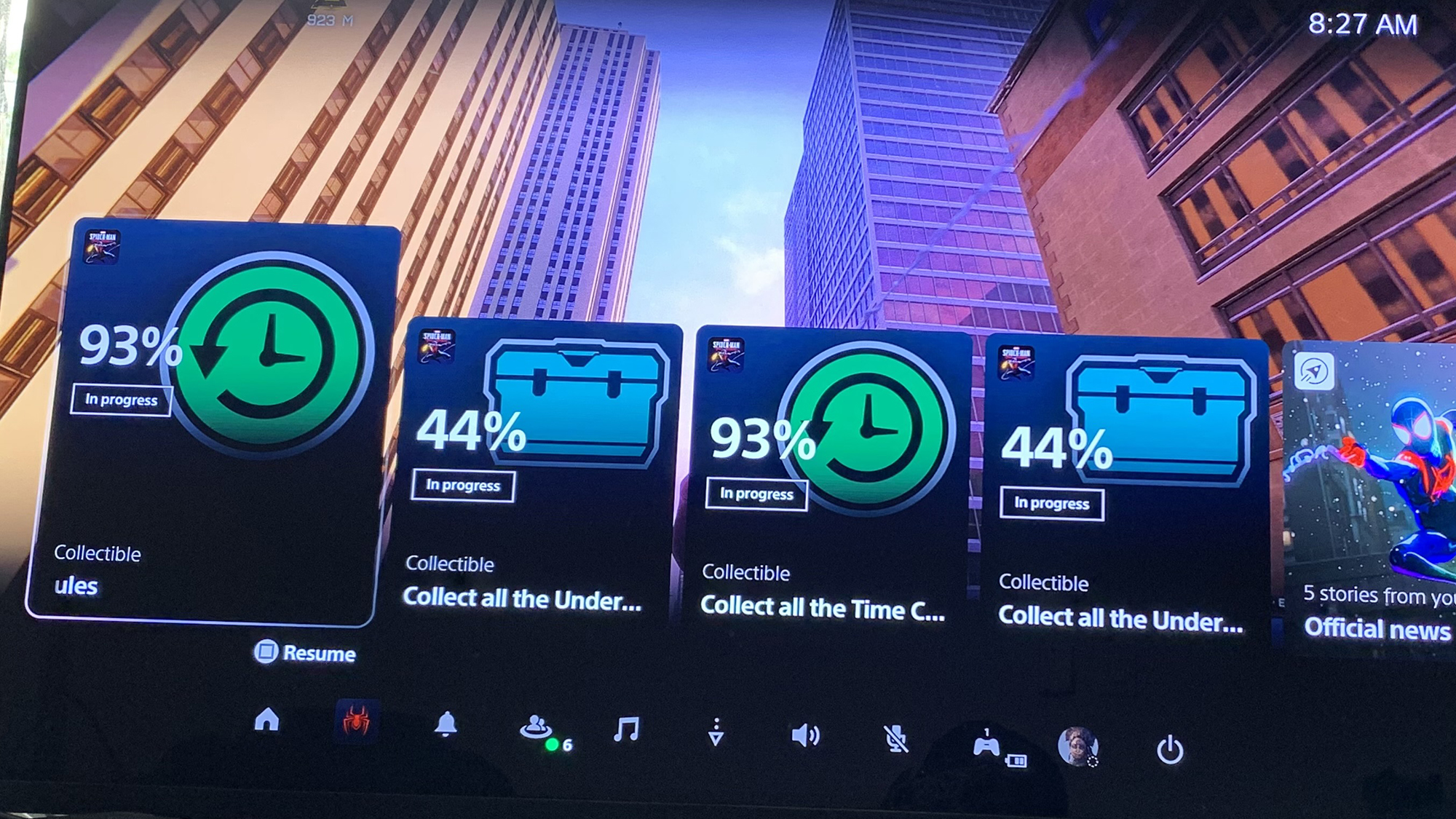
The PS5’s interface is at its best when you start playing a game. If you hit the PS button while playing a game, you’ll queue up the Activities menu, which gives you helpful information, such as mission progress, a trophy list and a list of available in-game activities through a collection of large tiles. That meant when I starting web-slinging through New York City in Spider-Man: Miles Morales, I could start a main or side mission from there instead of making my way through the city getting distracted by crime alerts and the many collectibles strewn about the world. It’s a time saver if you want to laser focus on a particular goal.
If that isn’t cool enough for you, you can also hit up the Activities menu when you’re perusing your Game Library, allowing you to bypass those pesky menus and jump into the thick of the action. It’s a bit weird for someone like me who loves nothing more than meandering through a game and finding all the secrets hidden in the various nooks and crannies (getting there’s half the fun and all that). But I understand and am excited by how revolutionary this can be for gamers, especially for some of us older gamers with families to take care of and websites to run. Whichever way you play, it’s going to be interesting to see how developers plan to use this functionality in the future.
PS5 performance
Sony didn’t cram all those powerful specs into the PS5 just for show. With them, the PS5 is one of the most powerful gaming consoles in the world. It’s not the most powerful, of course (that honor goes to the Series X), but the PS5 isn’t too far behind. I got to see that first hand as I played Spider-Man: Miles Morales.
While I was definitely impressed with his line-up and hair texture, the particle effects that generated whenever I broke some of the enemy's high-tech weaponry was breathtaking. And even when I was fighting a room of at least 10 baddies, stringing together 60-hit combos, there was never a lag in the action, unless you count the purposeful slow down brought on by performing a perfect dodge. I had the same experience playing Witcher 3: The Wild Hunt. Where I would run into latency every now and then on both the PS4 Pro and Xbox One X, I encountered no such problems on the PS5. It was just blood, guts, metal and an occasional Igni (fire) spell.
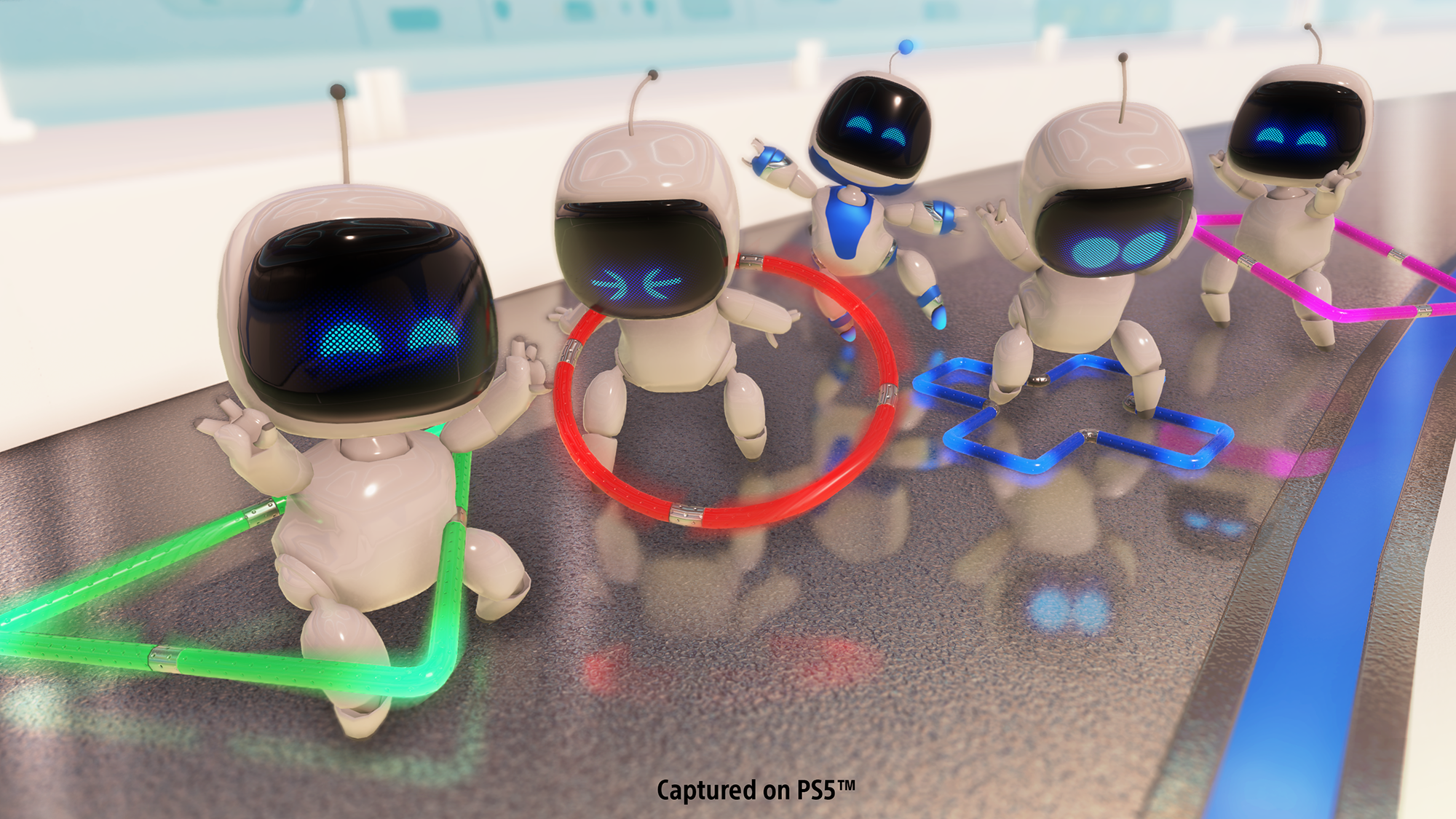
If you’re looking for a higher frame rate in lieu of realistically reflecting windows, Miles Morales has a Performance mode that disables ray tracing in favor of upscaled 4K and a higher frame rate. Both modes look and perform great, but right now, I want to look at shiny reflective windows. Either mode is preferable to gaming on my PS4 Pro, which capped me at 30 frames per second compared to 60 fps on the PS5. It’s no way for any self-respecting gamer to live.
And while a gorgeous, smoothly running game is always a great thing, I can’t leave here without talking about the load times on the PS5, or the lack thereof. It took 11.5 seconds for the PS5 to boot up Miles Morales compared to 12.4 seconds on my PS4 Pro. On Assassin’s Creed Origins, the PS5 gave a boot time of 59.05 seconds compared to 1 minute and 24 seconds on the PS4 Pro. When I performed a fast travel in Witcher 3, it only took 3.9 seconds on the PS5 compared to 47.2 seconds on the PS4 Pro.
I eventually pulled my attention away from the beautiful havoc I was wreaking upon mine enemies. I paused the game and heard — nothing. No spinning discs, no whirring fans struggling to keep everything cool. I heard nothing from the PS5. which was standing vertically 5 feet, 4 inches away from me on my entertainment center. Even when I got close to it, the console was quiet. It’s a welcome change from the jet turbine-like noises that come from my PS4 Pro. And while the air being dispelled from the vents was warm, it wasn’t toast-a-smore hot, which is a big accomplishment.
PS5 games
A new console should mean new games, with a focus on exclusive titles that show off what the console can do. And while the competition is still getting its ducks in a row on that front, Sony’s out here giving the fans what they want: exclusive first-party titles that are big on the ooh, ahh factor. Aside from Astro’s Playroom, my introduction to PlayStation’s interpretation of next-gen comes by way of Spider-Man: Miles Morales; the game is polished, with a solid story and plenty of flashy new moves to explore.
However, you don’t just have Miles to look forward to. Out of the 23 launch titles, seven will be exclusive. In addition to Astro and Miles Morales, you’ll have the opportunity to play Bugsnax, Sackboy: A Big Adventure, Marvel’s Spider-Man Remastered, Demon’s Souls (remake), Godfall and The Pathless. To sweeten the deal, Bugsnax will be free at launch for PS Plus members.

In addition to first and third-party exclusives, Sony is rounding out its launch lineup with AAA titles like Watch Dogs: Legion, Devil May Cry: Special Edition, No Man’s Sky and Assassin’s Creed Valhalla.
And while it’s true that many of these games will be available on PS4, most of which you can play in 4K if you have a PS4 Pro, you’re going to miss out on that sweet 120 fps frame rate. Plus, don’t forget that most of your PS4 collection will make the jump to the PS5 as well.
PS5 backwards compatibility
Although 23 launch titles is a great way to kick off a console, not every game is for every player. In order to supplement the catalog, Sony’s doing something a bit unprecedented: making nearly all of its PS4 games backwards compatible with the PS5. And just how much is “all”? 99%. That’s right, you can play up to 99% of the PS4’s vast catalog on the PS5, including PSVR titles.
This a big change from the PS4, which offered no such support for PS3 titles, and instead made us pay money for remasters or a PS Now subscription. It was a glaring omission from PlayStation, especially when Xbox fully embraced backwards compatibility on the Xbox One, One X and S. And while making most of the PS4 lineup available, it still can’t hold a candle to Microsoft, who has made virtually all of the Xbox library available on the Series X. That includes games dating all the way back to the original Xbox. Still, PlayStation is to be commended for finally getting its head in the game (pun definitely intended).

Backward compatible titles will benefit from faster loading times and using the PS5-exclusive Game Boost feature that improves both frame rates and resolution when enabled. Game Boost works by taking advantage of the variable frequencies on both the CPU and GPU, allowing the components to function at optimal levels regardless of temperature. When enabled, Boost Mode uses an intelligent internal monitor to analyze the CPU and GPU workloads and shift them accordingly.
With a focus on efficiency, this allows the PS5 to squeeze out higher speeds from its compute units. From there, AMD’s SmartShift technology kicks in, allowing the CPU and GPU to give each other extra power when needed. The technology actually enables both components to hit higher clock speeds than even the Series X. With that extra power, you get a prettier looking and playing game without overheating either the processor or the graphics card.
TL:DR: CPU and GPU use a monitor to loan each power when necessary, extra power is used to beef up frame rates and resolution without cooking your components.
Keep in mind that while some games might get upscaled to 4K, they could still be potentially capped at 30 fps depending on how the developer programmed the title. However, many developers will be providing patches during launch to bump the frame rate up to at least 60 fps.
PS5 cloud gaming
So, onto cloud gaming. After a slow and uninspired start, Sony has built up its subscription cloud gaming service, PS Now. The company claims the service currently has 2.2 million active subscribers with over 800 games spanning the PS4, PS3 and PS2. A yearly subscription costs $59.99 while 3-month and 1-month subscriptions are priced at $24.99 and $9.99, respectively. This is on top of your PS Plus subscription which boasts similar lengths of time and pricing.
PS Now allows gamers to stream games over Sony’s servers, saving you valuable storage space on your console. Even your game saves are stored in the cloud. However, like all cloud gaming services, you’ll need a fast and steady internet connection to get the best results.
Of those 800 games, most of the catalog is composed of older titles. Unfortunately, Sony’s been hesitant to put its newer games on the service at launch, and will instead wait a couple of years out to add them. That means you’ll have to wait a while for games like The Last of Us II or Ghost of Tsushima to make their grand debuts. And this is a streaming-only service, which means you can’t download these games onto your console.
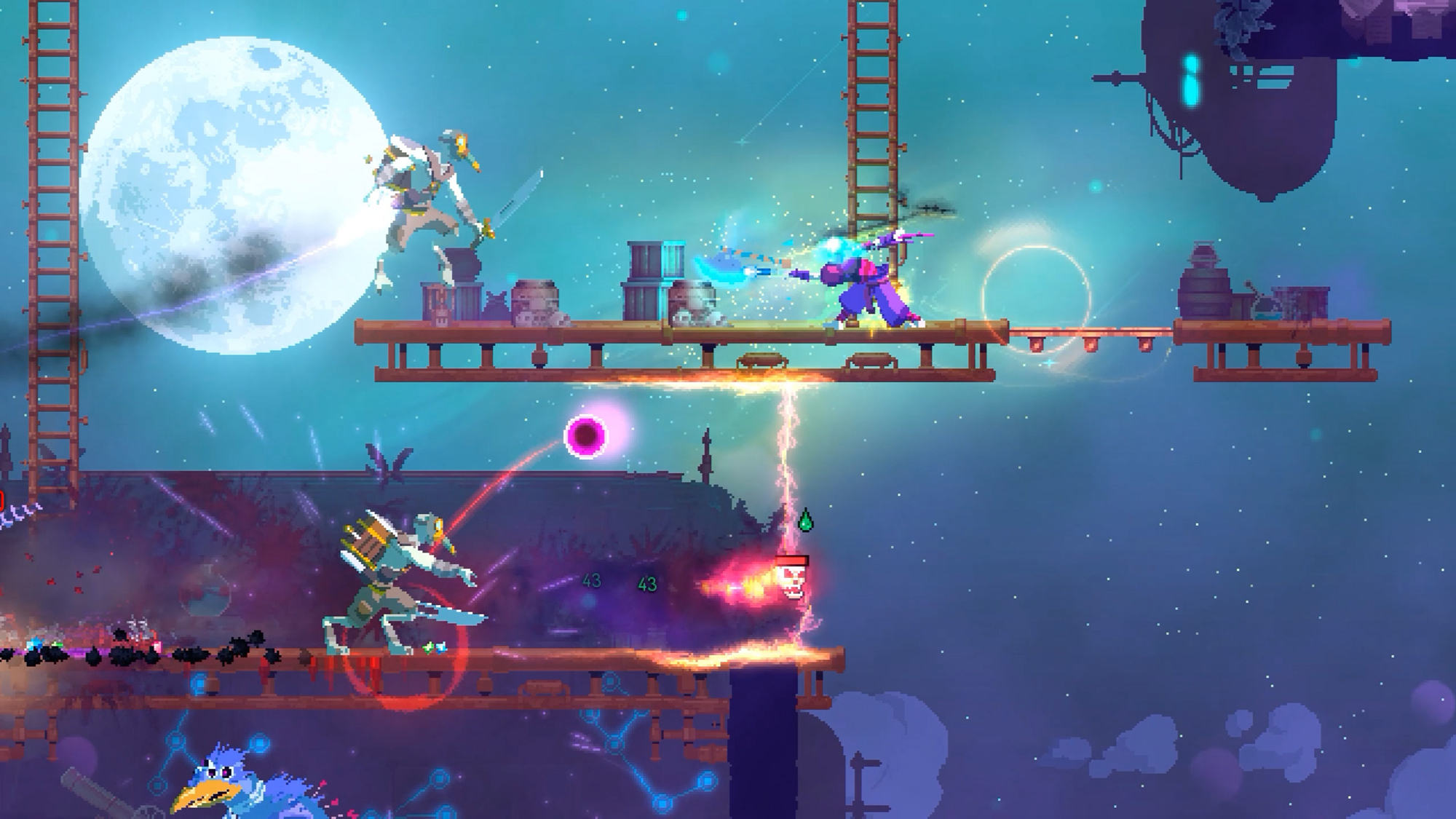
On the bright side, with PS Now, you can play your favorite PS3 and PS2-era games on the PS5 or stream them to PC. Sony’s currently looking for ways to make the leap to mobile.
So how does PS Now stack up to the new kid on the block, Xbox Game Pass Ultimate ($14.99 a month)? For starters, at 800 games to 200, PS Now has more games in its catalog. This makes sense since PS Now has been around since 2014 and has had more time to build out its catalog. However, it should be noted that Game Pass Ultimate gives you access to just about every title in the Xbox catalog dating back to the OG Xbox. Every month it swaps out a handful of titles, so your favorite game might be out of the running every now and then.
In addition to Xbox’s library, Game Pass Ultimate is also bringing EA Play’s games into the mix with both services offering day-of-launch access to titles. Thanks to Microsoft xCloud, you can play on your console, PC or mobile device.
Bottom line
If you imagined a next-gen console, despite all the memes and jokes, I’m pretty sure, it would look pretty close to the PlayStation 5. Once you start playing with this thing, you’ll understand why PlayStation went with a take-me-to-your-leader aesthetic. When it comes to hardware innovation, the PS5 is setting the bar awfully high. The DualSense controller is the haptic accessory I’ve been waiting for. I need Oculus and HTC to take notes on this thing. The spatial audio lives up to the hype and I’m anticipating/dreading when it comes time to play Resident Evil 8.
The new interface is inspired, offering speed, fluidity and familiarity. And the Activities Menu and Switcher are literally game-changing features. I especially can’t wait to see how the former will develop over time.
And ah yes, the games. It’s here that Sony is giving gamers what they want –– those exclusive experiences that make you want to invest upwards of $500 to get a piece of the action. Spider-Man: Miles Morales is sure to bring the gamers to the yard, but just in case, they’re offering Bugsnax for free at launch. And if none of those launch titles tickle your fancy, you can catch up on nearly all of your PS4 backlog in breathtaking, upscaled 4K until God of War, Horizon Forbidden West and other heavy-hitter AAA titles launch in 2021.
And while it’s true on paper that the PS5 isn’t as powerful as the Xbox Series X, Sony makes use of what it has in some truly innovative ways. The result is that the console manages to squeeze every bit of performance out of its components for faster clock speeds which translate to better-looking games and higher frame rates. I don’t think anyone’s going to complain about that.

Sherri L. Smith has been cranking out product reviews for Laptopmag.com since 2011. In that time, she's reviewed more than her share of laptops, tablets, smartphones and everything in between. The resident gamer and audio junkie, Sherri was previously a managing editor for Black Web 2.0 and contributed to BET.Com and Popgadget.
